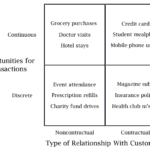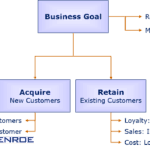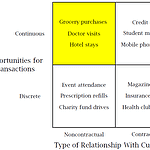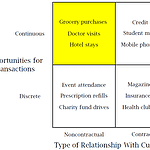CEOs and CFOs like numbers; mostly profitability numbers but revenue and return on investment also catch their eye. So, if you can’t speak their language and convert your customer experience project into hard numbers that talk to them; your chance of having it approved are slim to none.
After months of patient research, meetings and design sessions you have created a truly useful and, you think, value adding improvement to the business. All you need is some (or a lot) of budget to make it a success. But before the budget gets signed off you need to determine, in business terms, the value that the change will bring to the company. Most often that value is expressed n terms of Return on Investment.
The Basics of Return on Investment (ROI)
At it’s most simple, ROI is the following calculation:
ROI = Return / Investment
There are a few caveats for this calculation:
1. Normally the (I)investment will come before the (R)eturn.
For instance you invest to increase the training for customer service agents in the expectations of greater customer loyalty. The investment will come in the first part of the project but the return will only come weeks or months afterwards.
Depending on how your company works you might also need consider when the investment cost occurs (which financial year) and when the return comes (which financial year).
2. You should specify a time period
Because of the factor noted above you normally need to specific a time period for the ROI calculations. So you might say ROI is 20% in the fist year or 25% per annum or 15% over five years.
In some cases, when the cost is large, you may need to look several years into the future to collect enough returns to make the project viable.
(Note that in this example we are ignoring the time value of money and the concept of Net Present Value but that should be factored into longer and/or risky projects.)
3. Use Margin NOT Revenue
When calculating the R part of the equation you need to consider the incremental gross margin or profit that your company will generate, not the revenue.
Revenue is the income from the sale. On the other hand, gross margin or profit is the revenue less the costs it takes to deliver that revenue.
For instance if you sell books, the revenue is the price of the book that you sell to the the customer. Gross margin is the price of the book less what it cost you to purchase it. When performing an ROI calculation your should only consider the gross margin or profit from the sale.
4. The Break Even point is 100%
For the above equation, to generate net incremental value for your business you need to generate an ROI of at least 100%. At that level it means that you are generating $1 of additional value for every $1 of cost you are expending.
If your ROI is less than 100% you are losing money on your project and you should not proceed.
A Simple Example
Consider the example above where you invest, say, $50,000 in training for your staff. Through your calculations you have determined that you expect to gain $40,000 in additional sales every year from that one round of training. You know your gross margin is 50%. For different time periods your ROI calculations looks like this:
1 Year ROI = 1 * (40,000 * 50%) / 50,000 = 40%
2 Year ROI = 2 * (40,000 * 50%) / 50,000 = 80%
3 Year ROI = 3 * (40,000 * 50%) / 50,000 = 120%
So you can see from this example that it is not until the program has run for 3 years that you will receive a positive return on your investment.
Calculating Return is often the hardest part
Most of the time determining the Investment part of these calculating is relatively easy. It may be a complex project but normally you know what the costs will be and when they will hit.
In contrast the Return is often very difficult to calculate because of the large number of unknowns. This is particularly the case with customer based projects.
When looking for the R in customer projects there are are only three ways to increase customer value:
1. Sales: Increase per customer sales, i.e. sell more to your existing customers.
2. Loyalty: Retain customers longer
3. Cost: Lower the cost to serve
The last one is relatively straight forward but how do you calculate R for Sales and Loyalty? There are a couple of approaches you can take.
Customer Satisfaction / Net Promoter Score
Through the customer feedback statistics for your organisation and linking individual Net Promoter Scores scores to customer sales performance you can determine the sales impact of a specific investment.
Using these calculations you can determine what a 1 point increase in Net Promoter Score is worth in terms of additional sales or improved customer retention.
Customer retention
The R for acquisition campaigns is conceptually easy (how many new sales did you make) but doing the same thing for existing customers is more difficult.
Effectively you are asking the question: how many customers did we not lose this year and how many sales did we therefor not lose. This is somewhat bacdwards from what you normally think about and it can be difficult to get your head around.
Fortunately, “there’s an app for that”. We have developed several return on retention models that look at the opportunity cost rather than the acquisition revenue of retention campaigns. You can download a free simplified customer lifetime value and return on customer retention calculator and see what your R looks like.
I've created an Excel Customer Lifetime Value Calculator: Download Here








